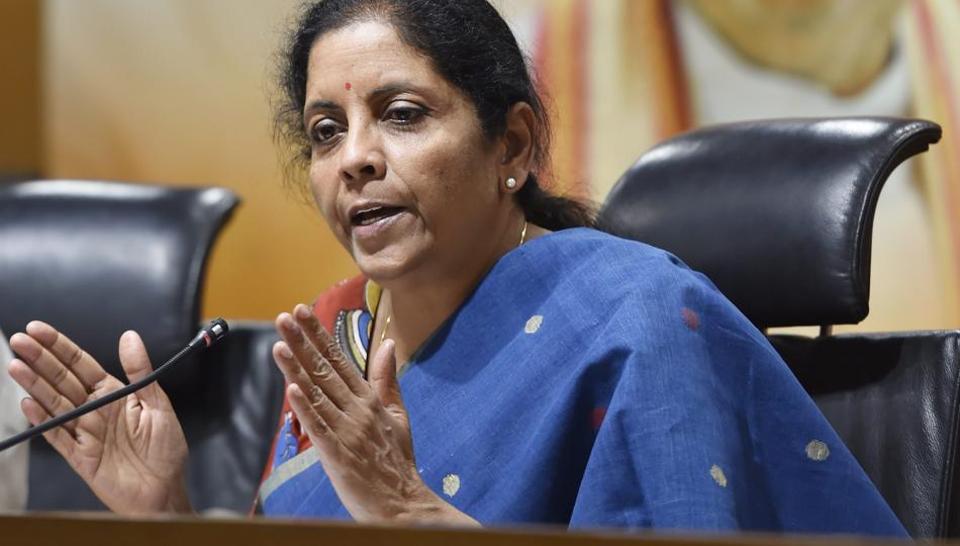Defence Minister Nirmala Sitharaman clarified that there’s no “scam in Rafale”. She also reiterated that those shouting “ammunition shortage” should be asking themselves. There was shortage before 2014. A report, for Different Truths.
Defence Minister Nirmala Sitharaman on June 6, 2018, for the ninth time, clarified that there’s no “scam in Rafale”. She also reiterated that those shouting “ammunition shortage” should be asking themselves, “Who left the shortage? There was shortage before 2014.”
The Raksha Mantri, in her forgotten hawkish-spokesmanish self of before 2014, when she was one of many spokespersons the BJP fielded on television, was not lost in translation, too. The Rafale did not fly over her head. Neither did “thoroughfare cantonment”, which she said, was not just what the BJP alone served but also was at the request of several other parties including the Shiv Sena.
Meetings were held and roads shut in cantonments were discussed and the “politics over them”, too. In every meeting the military and civil were present and a series of meetings were held with the “wives’ chief” also present.
“The chief returned on May 19 from a trip abroad and another meeting was held. In 52 cantonments 815 roads are under closure; 119 had been closed without considering any procedure and there is a laid down procedure. Only 80 of the 119 have been opened. There are still 24 which are not open; 15 are partly open. I met the wives and heard their concerns. They were largely of security. Where their security is concerned we are aware. But can we be on the side of following the rules?” Sitharaman asked.
On Doklam and China she said “things are going on track” and on the Maldives “there is nothing to report”. But it was on Kashmir and the Ramzan-ceasefire that Nirmala Sitharaman sought to clear the air: “Is there a confusion? We respect the Home Minister’s announcement on ceasefire but we will hit back when attacked, there is no U-turn on that. We honour the ceasefire but unprovoked firing will be returned.”
For some reason, however, no journalist asked Sitharaman of the spray of grenade attacks in the Valley and the resurgence of a seemingly dead ‘Al-Badr’. Maybe, if the reporter of ‘Kashmirwalla’, a news website administered from Kashmir, was present, he would have posed the question.
Seems like, even as the Minister of Defence was battling questions on ammunition shortage and a shortage of funds to buy ammunition, Al Badr was digging into its reserves of ammunition to rise up and throw grenades at the forces to announce its rebirth in the Valley of Unrest.
In a video posted on Kashmirwalla, a young masked man, who identified himself as Hamza Burhan, “divisional commander of Al-Badr in South Kashmir”, is seen and heard “apologising” to the civilian population of the Valley of falling collateral to the grenade attacks, which he said, from behind a mask, will continue, unabated. Apparently, Al-Badr is not facing a shortage of grenades which when thrown is all shrapnel with killing impact.
Hamza spoke of the “grand revival” of Al-Badr with continued attacks on police, paramilitary and the Army, and took responsibility for the grenade attack on CRPF personnel in Tahab village of Pulwama district on June 3, 2018. Three civilians and four CRPF were wounded in the attack, which speaks volumes of Al-Badr tactics. This is an outfit which doesn’t believe in bravado or courage but hurls grenade from cover and flees, no skin off our backs!
And Al-Badr, said the coward Hamza on his knees (literally, in the video), is “recruiting more boys”, adding to its current “strength of close to 100 boys”. The goal is to hike Al-Badr numbers “by 200 more boys”. Grenades are in no shortage so the need for more hands to throw them. While on his outfit, Hamza warned police, STF and political workers with one “last message”: “If you move back then fine or else wait for the consequences.”
“The aim of this video is to claim responsibility for the attacks but also to tell people to stay away from places where there is CRPF, Army, police or political workers,” Hamza said. The last (to political workers) a chilling message to political parties of all hues and affiliations that they too are in the crosshair, no more hawabaazi and hiding behind Hurriyat and other covers.
Al-Badr was launched in 1998 but had gone below the radar for over a decade since then. An ISI-creation, on January 6, 2017, a certain Muzaffar Ahmad Naikoo alias Muzz Molvi of Sopore was killed and it was thought that was the end of Al-Badr. But since then three of the outfit were arrested in Mysore and now more of the Al-Badr are back to hurl grenades at the security forces in the Kashmir Valley.
But for all of Hamza’s chilling message the Defence Ministry and Indian army are not breaking the sweat. It’s just another militant outfit with terrorist tendencies, one among many, no bigger a threat than LeT or Jaish or Hizbul. Of course, the ‘grenade-after-grenade’ is a blasting bee in the bonnet but that doesn’t mean they cannot be handled. Life in the Valley is not going to being much different than what it was before the grenades. Essentially, that is.
Sushil Kutty
©IPA Service
Photo from the Internet





 By
By

